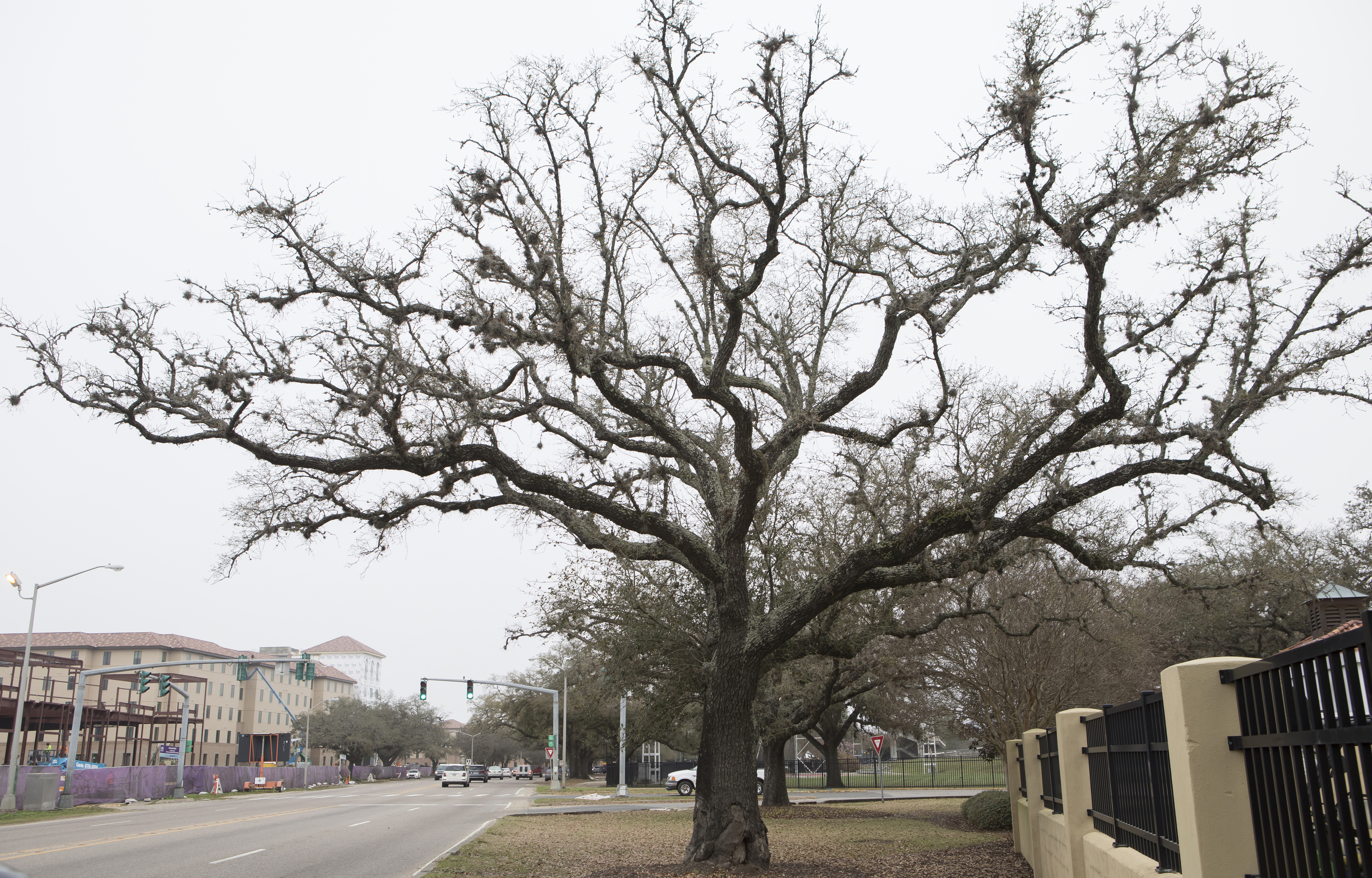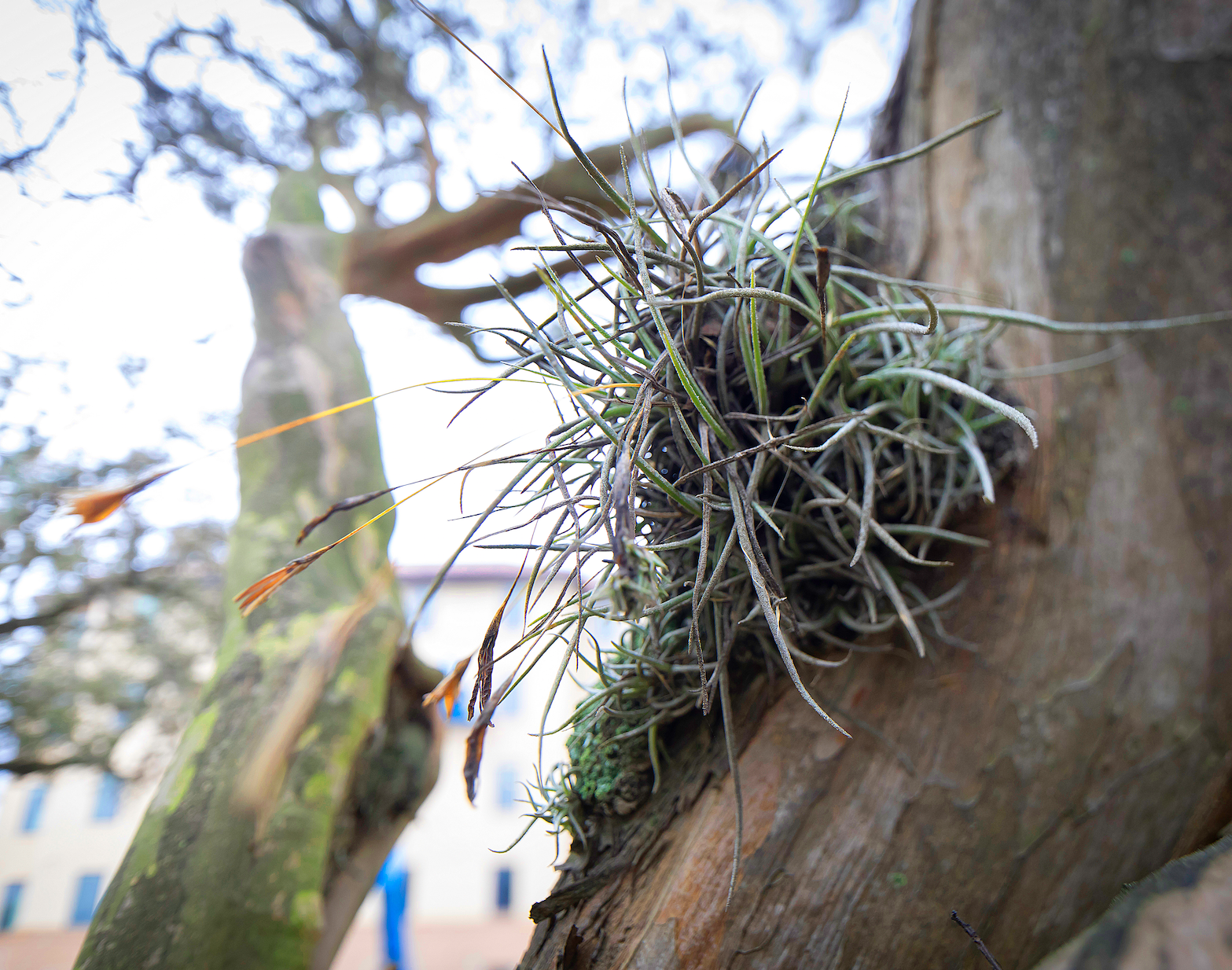
Is ball moss killing Baton Rouge’s trees?
In downtown Baton Rouge, a crepe myrtle stands sad and gray on the corner of North Boulevard and Seventh Street, its branches covered in strange, furry growth. Suzanne Turner calls it her “poster child.”
Like the three neighboring crepe myrtle trees on the corner, it’s smothered in ball moss—a round, gray, tentacled plant that grows on tree branches. Turner, a local landscape architect, has been outspoken about controlling ball moss infestations.
 Ball moss is similar to the various species of air plants that have become trendy in home decor recently. Air plants are low maintenance because they don’t root in soil. But when ball moss attaches itself to trees, it’s not so aesthetically pleasing.
Ball moss is similar to the various species of air plants that have become trendy in home decor recently. Air plants are low maintenance because they don’t root in soil. But when ball moss attaches itself to trees, it’s not so aesthetically pleasing.
|
|
The phenomenon isn’t new to Baton Rouge. Fred Fellner, LSU’s assistant director for landscape services, has battled the plant for more than 20 years.
A relative of Spanish moss, ball moss thrives on low, leafless limbs. Baton Rouge’s warm weather, humidity and abundant trees make the city an ideal environment for the plant.
If you’ve noticed more ball moss around town lately, you can thank this year’s harsh winter. The freezes caused leaves to fall from the trees, giving ball moss ample space to thrive, Fellner says.
Fellner, Turner and Davis Rhorer, executive director of the Downtown Development District, agree Baton Rouge needs a community-wide plan to eradicate ball moss.
“On North Boulevard, the integrity of the trees is compromised,” Rhorer says. “I don’t know how it wouldn’t kill a tree.”
A heavy infestation of ball moss can endanger a tree but not necessarily kill it, Fellner says. The moss occupies budding sites along the limb, which will prevent those buds from getting sunlight. “It’s like wrapping a towel around a branch,” he says.
Ball moss is not particularly attractive, either. Infested crepe myrtles on North Boulevard and stretches of Fifth Street look as if they’re from another planet.
“Even if trees aren’t dying,” Turner says, “ball moss is unsightly on the live oaks, crepe myrtles and sweet olives. And it will go anywhere. It’s out of control.”
For infested trees on private property, Fellner recommends some simple, inexpensive solutions. Trees can be sprayed with water and then dusted with sodium bicarbonate (baking soda). That’s how LSU treats infested trees on campus.
Ball moss can also be easily removed by hand from branches. “It’s not firmly attached,” Fellner says. “Just grab ahold of it and tear it off. But once it’s removed, it should go right in a garbage can, or it will reproduce.”
Baton Rouge’s vast urban forest, Turner adds, is one of its major assets. “Visitors always talk about how nice the trees are. But trees are not beautiful when they’re covered with ball moss.”
This article was originally published in the April 2018 issue of 225 Magazine.
|
|
|

